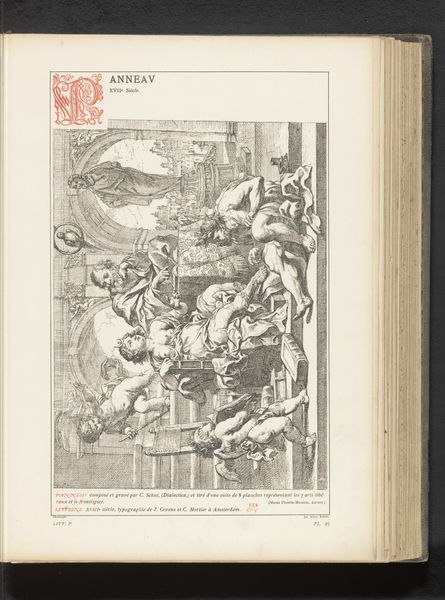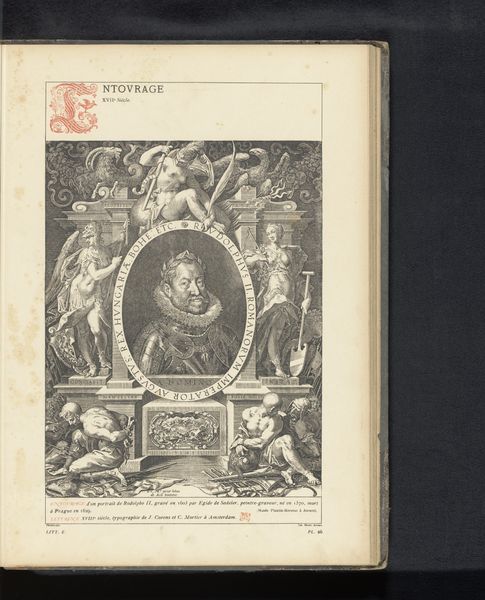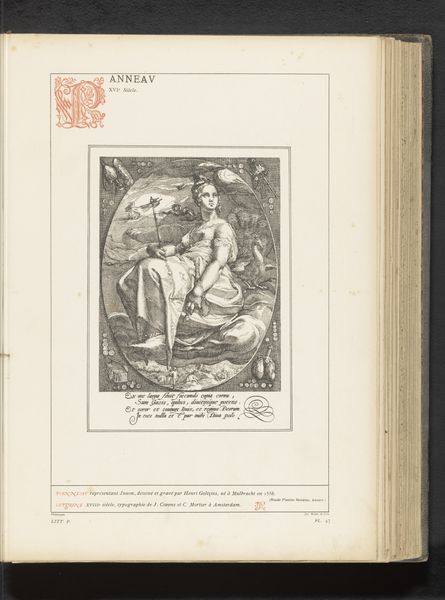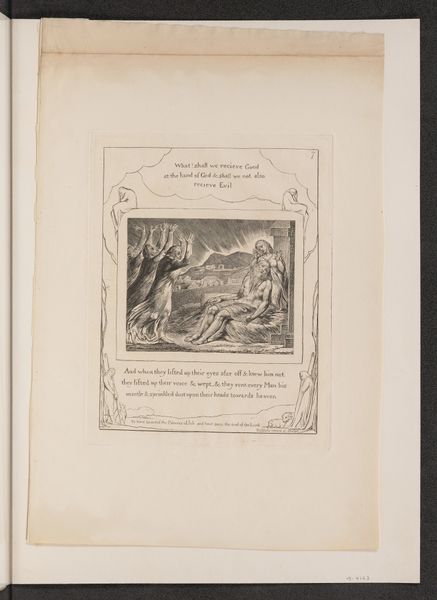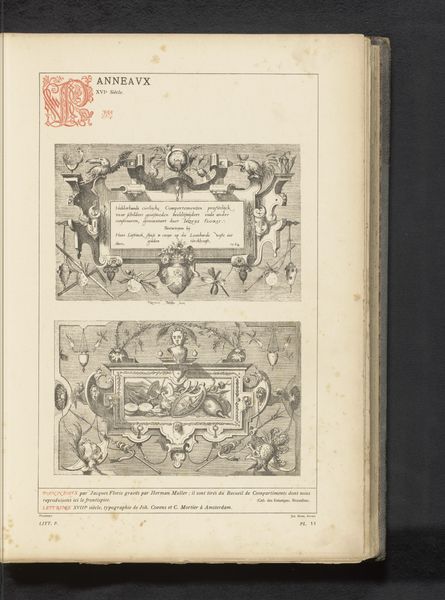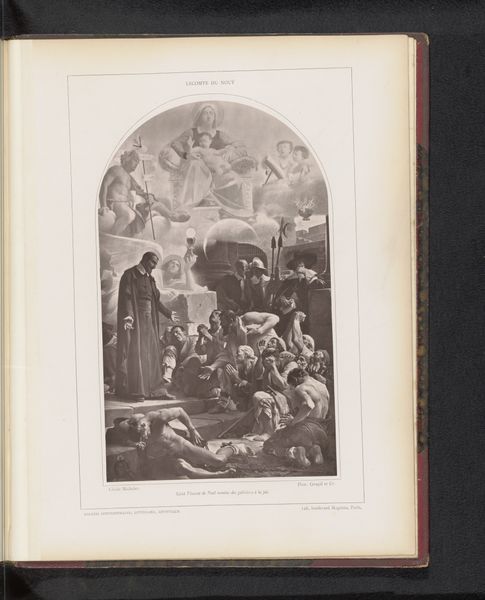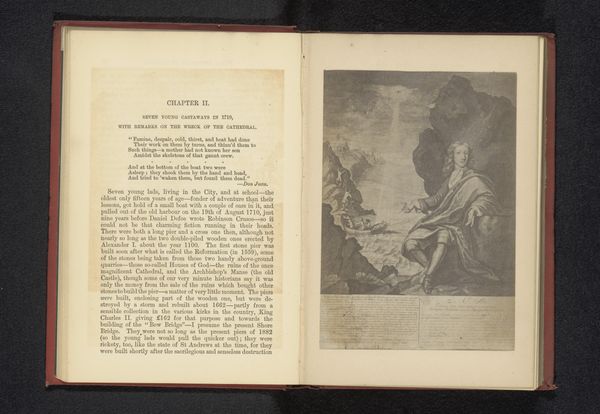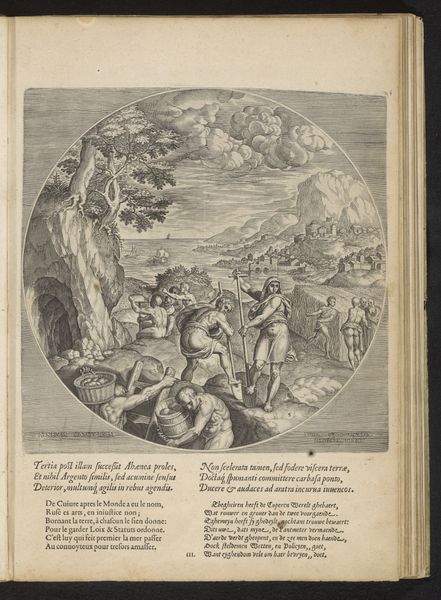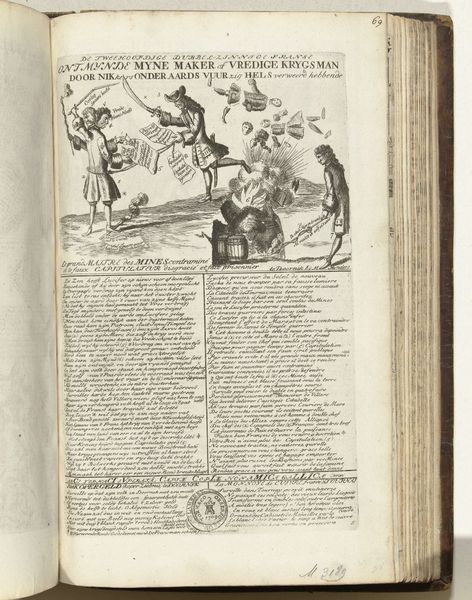
Reproductie van De drie schikgodinnen, een prent door Aegidius Sadeler naar Joris Hoefnagel before 1881
0:00
0:00
drawing, print, etching, paper, engraving
#
drawing
#
allegory
# print
#
etching
#
paper
#
11_renaissance
#
history-painting
#
engraving
Dimensions: height 346 mm, width 228 mm
Copyright: Rijks Museum: Open Domain
Curator: Look at this compelling print, dating from before 1881. It is a reproduction by Aegidius Sadeler, after Joris Hoefnagel. Its title is "Reproductie van De drie schikgodinnen," which translates to "Reproduction of the Three Fates." The media employed seems to include etching and engraving on paper. What's your immediate take? Editor: It's... meticulously grim, isn't it? All those tiny, precise lines creating a mood of solemnity, almost fatalism. And contained in a circle as if destined, enclosed by fate itself! The engraving medium, chosen with such detail, enhances the air of inevitability. I can feel the weight of those boxes underneath them; destiny isn’t necessarily a joyous occasion, no matter how privileged. Curator: Precisely. The Fates – Clotho, Lachesis, and Atropos – embody crucial concepts, from birth and measuring out lifespans to the inevitable cut that brings an end. Sadeler and Hoefnagel invite us to reflect on our predetermined roles, the acceptance of which provides some solace against life's inherent tragedies. Those figures around the edges--are they cherubs or tormentors? Editor: Given that they are the fates, perhaps, both are contained inside! From a material point of view, it’s compelling that these powerful symbolic figures are rendered in something as reproducible as a print. It suggests a democratization of fate; everyone has to face it, everyone can buy a print about facing it too! How do you understand that choice? Curator: That’s a fantastic connection! It also makes the allegory so available – potent for self-reflection, political critique or religious insight. Engravings circulated widely during the Renaissance; these were crucial conduits for iconography, and allowed these visual narratives to reinforce, redefine or subvert beliefs. Each viewing became a performative ritual almost. Editor: So, it’s about both the symbolic meaning and also the physical object. That’s why I’m fascinated by art. How process can shape and alter symbolism, too! Thank you for sharing that vital context with me. Curator: And thank you for illuminating this work with your material perspective. It’s so very rare that prints and engravings are discussed and appreciated on the basis of their material status rather than only iconography.
Comments
No comments
Be the first to comment and join the conversation on the ultimate creative platform.

